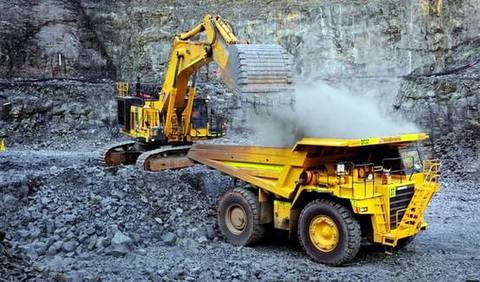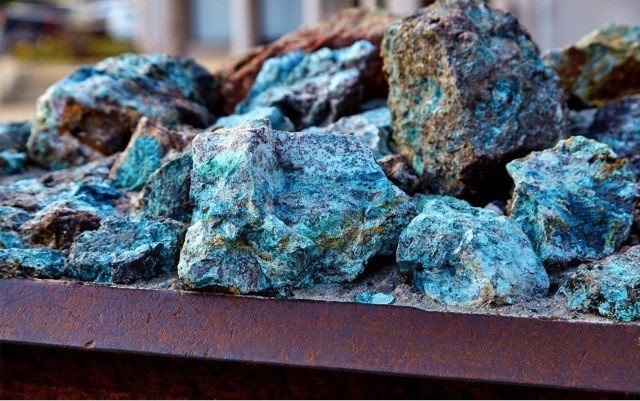Startup Tackles EVs’ Biggest Issue

Climate scientists tell us we must limit the earth’s warming to 1.5 degrees Celsius to reduce the risks of various catastrophic events. To do it, we need to lower our CO2 emissions by half in the next decade and achieve carbon neutrality by 2050. Replacing our fossil-fuel-powered auto fleet with electric vehicles is crucial to success. This change will be difficult and take time, but there is one big issue—the mining of battery components—that has been EVs’ dirty little secret.
KoBold Metals is a privately held San Francisco Bay Area high tech startup, backed by Andreesen Horowitz venture capital fund, Breakthrough Energy Ventures, a climate technology fund backed by Bill Gate and Jeff Bezos, and Equinor, the Norwegian state oil company, as major investors. KoBold has developed an artificial intelligence (AI) machine learning solution for the sourcing and mining of the precious metals used in our current battery systems—lithium, cobalt, copper and nickel. I met with KoBold’s CEO and co-founder, Kurt House, Ph. D, to discuss what they are doing and the impact it will have. House is a serial entrepreneur with an educational background in physics and math and a career curriculum vitae in energy—both oil/gas and sustainable energy. He is also an adjunct professor in Stanford University’s Energy Resources Engineering Department.
A Question of Speed
The move to EVs is accelerating, and major auto manufacturers like Tesla, GM, Ford, Volkswagen, Hyundai/Kia, Mercedes-Benz and others, are stepping up new EV introductions. However, for mass production of EVs, we will need a mass of the battery ingredients. And according to House, there isn’t enough metal around now to build the initial stock of EVs.
“To beat global warming, we need to electrify everything,” House said. “And we need to do it all in the next 30 years, so we need to build renewable like mad.”

Per House, there are about 1.3 billion cars around today, of which only 10 million are EVs. That total could be 3 billion vehicles by 2050. That means a lot of these metals need to be mined now.
However, while the mining industry does find some new materials every year with traditional methods, it isn’t moving at the pace needed to provide the materials for the batteries in a short time frame. There has to be a better, more efficient way that’s also sustainable and ethical.
House says there are two approaches:
- Spend more money
- Do better with the same money
The second approach obviously makes more sense.
“We need to find ore systems that can be mined with minimal impact, in reliable jurisdictions,” said House.
Location Is Everything
Unfortunately, much of the known cobalt is in Congo, where it is highly concentrated, some of it right at the surface and some in deep mines. Workers, often children, can dig it up by hand and bring it in for a few dollars—which in the poverty of the area is enough to be an incentive. This is obviously not a good long-term plan.
“We are trying to create a diversity of supply,” said House. “Major OEMs and battery manufacturers would rather have a sustainable, ethical choice in where they source their materials.”
That’s where KoBold’s Machine Prospector technology comes in. Here’s what KoBold’s website says about it.
“Kobold’s Machine Prospector technology combines never before used datasets with conventional geochemical, geophysical, and geological data in statistical association models to identify prospects…. KoBold’s technology accelerates exploration by efficiently screening large regions and makes our search more effective by identifying the most promising locations.”
Enter AI & ML
This means that KoBold uses AI and machine learning to look at all of the data, from 80-year-old maps to satellite data, to find the most likely sites for drilling.

“It’s aggregated from all over the world and structured into universal data schemas that can be interrogated by our algorithms,” said House.
What they are seeking is “compositional anomalies”—large chunks of rock that can be mined. As an example, House said that if you drilled for nickel under, say, your house, you would probably come up with dirt with 70 parts per million (ppm) of the ore in it. To extract the nickel from that would cost 100 times the current price for the ore. They want to find where it’s at 25,000 ppm, which would make it very economical to extract and process the ore.
So, why hasn’t anyone done this before?
“They couldn’t do what we’re doing even 10 years ago,” said House. “We are standing on the shoulders of trillions of dollars of high bandwidth computing networks that enable us to spin up and spin down dramatically large computing resources.”
Looking for Paydirt
KoBold’s Machine Prospector technology first makes predictions about where the ore is concentrated, and then collects additional data that helps to decrease uncertainty. The goal is to quickly eliminate any places that have a low chance of success so that when they do drill, it’s much more likely to hit paydirt.
Today, KoBold has field campaigns on three continents. Unlike many software companies, they do not license their technology to other companies—they use it themselves and partner with companies to do the actual drilling when they have decided on a location. Some projects they own 100 percent, and some are partnerships.
So, what does the market look like and what’s the best plan? Because battery components are nearly 100 percent reusable, they allow for a circular economy, which fossils fuels decidedly do not. House says we need to get all the metal we can in the next 30 years.
“With a circular economy, the metal stays in the system,” said House. “Circular economies require full renewable energy, so we just mine a bunch for a few decades and then we’re done.”
The manufacturers building the coming fleet of EVs want to ensure they have enough precious metals for the batteries they will need, and the battery manufacturers do, too. KoBold, by locating safe, accessible locations and providing focused, high-percentage, sustainable extraction methods, helps assure that we can convert to an all-electric fleet in time and with as little environmental impact as possible.
Story by Steve Schaefer
Related Stories You Might Enjoy—Other Battery News
Tech: How Long Do Hybrid Batteries Last?
Tech: Users Expect More from Batteries, But Don’t Expect Better Batteries to Deliver
Interview: Batteries Are the Problem/Battery Management Is the Solution
Tech: Toyota Going Electric with Solid-State Batteries
